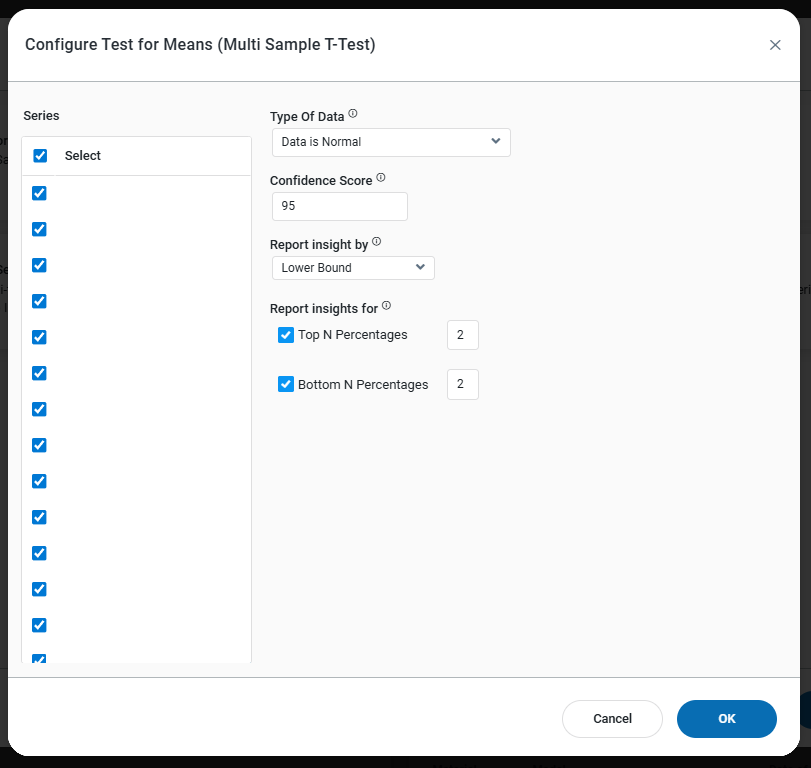Test for Means - Multi Sample T-Test
Intended audience: END-USERS DATA SCIENCE DEVELOPERS
AO Easy Answers: 4.3
Overview

The Multi Sample T-Test analysis refers to a statistical comparison used to determine if there is a significant difference between the means of multiple groups.
Purpose
A Multi Sample T-Test, more commonly known as ANOVA (Analysis of Variance) when comparing more than two groups, is used to determine whether there are statistically significant differences among the means of three or more independent groups.
Business Example
A mid‑sized retail company wants to compare average weekly sales across three marketing strategies:
Campaign A (email)
Campaign B (social media ads)
Campaign C (in‑store promotions)
If you compare more than two group means, don’t run multiple t‑tests — it risks false discoveries. Instead, use Multi Sample T-Test to first test whether any group mean differs. If significant, follow up with post‑hoc tests to locate differences. This keeps error rates controlled and provides clearer inference when evaluating business strategies (like campaign performance).
Data Sample
Campaign | Week 1 | Week 2 | Week 3 | Week 4 | Mean |
A (Email) | 50 | 52 | 48 | 51 | 50.25 |
B (Social) | 55 | 58 | 60 | 57 | 57.50 |
C (In‑store) | 53 | 54 | 52 | 55 | 53.50 |
End User Configuration - using Easy Answers solution

